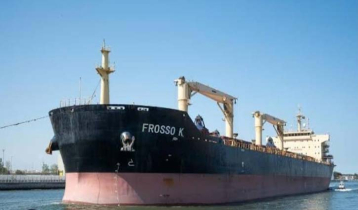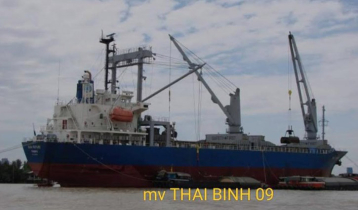Myanmar next giant RMG market
Manzurul Alam Mukul || risingbd.com

Myanmar has emerged as a new competitor to Bangladesh in the world apparel market, sources in the industry said.
Chinese, South Korean, Vietnamese and Indian entrepreneurs have started investing heavily in the readymade garment sector to avail themselves of the special privilege enjoyed by the Myanmar in the developed markets, specially in the EU, the USA and Canada markets.
In Bangladesh foreign investment in the RMG sector is restricted by the government as per prescription of the Bangladesh Garment Manufactures Exporters Association (BGMEA).
High labour and production costs in China, South Korea, Vietnam and India are pushing their entrepreneurs to shift RMG industries to Myanmar, sources said.
In recent times, the US and European Union have lifted sanctions on Myanmar as the military regime successfully held a credible parliament election last year.
The price of industrial land is very low in Myanmar compared to countries in Bangladesh, India and Pakistan and Sri Lanka.
The apparel export of Myanmar was only 900 million US dollars in 2012 that jumped to nearly 2.00 billion US dollars in the next three years.
The apparel export of Myanmar is likely to reach 4.00 US dollars by 2020, according to industry insiders.
"Myanmar’s export volume last year was $1.46bn. However, we are yet to receive data from Germany and Latin America," said U Myint Soe, chairman of the Myanmar Garment Manufacturers Association (MGMA). "Our expectation is that when we do, it will stand at $1.5bn."
The new export target was set by Myanmar’s Ministry of Commerce and is based on a national five-year export strategy.
"[The] MGMA participated in the development of the garment sector`s export strategy with the International Trade Centre in late 2013 and early 2014," Jacob Clere, MGMA’s project manager, told just-style. "It is the guiding document for industry strategy and development over the next five years."
The ITC is the business development wing of the World Trade Organisation (WTO). However, U Myint Soe said that while exports are increasing, the current market situation is challenging.
"The orders are coming in, but the prices are no good due to the deflation of the Euro and the strengthening of the US dollar. Of course, the rest of the world is also affected by this, but in Myanmar, our production costs and expenditure are also steadily rising."
He added that while exports to the European Union are "increasing by the month", the EU still accounts for a small share of total earnings – last year it stood at $16m. Exports to the US were higher at $100m.
U Myint Soe, however, predicts Japan and South Korea will continue to be the main players in Myanmar’s garments sector, with knitted and woven wool products, in particular, being in increasingly high demand.
Meanwhile, Bangladesh will remain the top garment sourcing destination for global retailers at least for the next five years, and buyers will continue increasing purchase from the country, McKinsey & Company said in a report.
During the period, the country`s garment exports will grow 7-9 percent year-on-year, while India and Vietnam will be its nearest competitors, according to the survey report.
The survey was conducted among 40 chief purchasing officers (CPOs) of top 40 international garment retailers during January-February this year.
Some African countries are also coming up strongly in the global garment business, said McKinsey & Company, which is a global management consulting firm and serves leading businesses, governments, non-governmental organisations, and not-for-profits.
The respondents in the survey "Sourcing in a volatile world: The East Africa opportunity" cumulatively purchased $70 billion worth of garment items worldwide in 2014.
“For international CPOs, Bangladesh remains the top future sourcing destination, as 48 percent of respondents put it in the top-3 up-and-coming sourcing markets,” according to the report.
“Sixty-two percent of our respondents said they intended to increase their sourcing value from Bangladesh over the next five years.”
Among top 10 sourcing destinations, Vietnam is in the second position as 33 percent respondents chose this country while, India, Myanmar and Turkey are in the third position as 30 percent respondents chose them as sourcing destination.
Twenty-three percent respondents chose China, 13 percent Ethiopia, 10 percent Indonesia, while 5 percent CPOs chose Egypt, Sri Lanka and Tunisia as the top 10 sourcing destinations.
“We must note that even these three top countries` combined export is only one-third of the dollar value coming from China currently. China remains the undisputed giant of garment exports, with eight times the dollar volume of exports than the number two Asian apparel sourcing country, Bangladesh.”
Vietnam and India are tied for the third place, each exporting garments worth around $17 billion.
Despite high growth over recent years neither country poses a threat to China`s dominance at the moment, as all are facing their individual challenges in terms of political stability, garment industry structure, or competitiveness.
Only over the longer term is China`s manufacturing base expected to weaken due to macro-employment trends.
A recent report by the McKinsey Global Institute forecasts China`s labour pool could shrink by one-fifth over the next 50 years.
But any trend that is expected to play out over 50 years is only just beginning to be visible in the distance, in 2015, the report said.
However, nearly three-quarters of the respondents said they expect to decrease their allocation to Chinese firms over the next five years, although export statistics do not reflect the statements of the CPOs.
Additionally, China is turning more and more of its apparel production capacity toward its own domestic market, serving its growing middle class.
“Though Chinese production of apparel has fallen since 2010, we believe the dominance of the global apparel-sourcing market, the mix change toward Chinese consumers, and the substantial size of its growing middle class, will keep China the apparel production powerhouse for the foreseeable future.”
The survey found that many of China`s garment makers are now looking to open facilities in Cambodia, Vietnam, and Myanmar, as well as in other promising countries.
The report said the African countries are attractive candidates to be the next China. Although African countries are not ready currently to take substantial volumes, analysis of population trends can point to potential contenders over the longer term.
Population trends point toward sub-Saharan Africa, as it is expected to enjoy the most energetic growth in working-age population anywhere over the next 20 years. By 2035, the working population in the region is expected to pull even with China today, the report said.
“While this is encouraging, we believe that sub-Saharan Africa must be understood at a granular level because the degree of each country`s development and potential for garment exports differs.”
When the CPOs were asked to assess the prospects for the importance of sub-Saharan Africa over the near term, they said they would be sourcing a greater share of their overall portfolio from the region in 2020 than they are in 2015.
Granted, the dollar volume exported to western markets at the moment is small, but if those figures are borne out, the sub-Saharan share could grow exponentially in the next five years.
Thirty-three US buyers noted the rising importance of sub-Saharan Africa for their own sourcing strategies, while only 11 percent of European CPOs agreed with the rise of African countries as sourcing destination.
Of the 28 CPOs already involved in sourcing from sub-Saharan countries, a bit more than half deal directly with local suppliers. Not quite 15 percent source via Asian suppliers` headquarters, and 32 percent source via agents.
The global export data from the World Trade Organisation shows the export value of clothing from the continent as a whole stood at $9.9 billion in 2013, but the majority of those exports came from the countries in North Africa, such as Morocco and Tunisia, rather than the sub-Saharan nations.
“If we examine the top-ten garment-exporting nations in sub-Saharan Africa, we see they collectively amount to only a 0.55 percent share of global apparel exports,” McKinsey said.
However, many governments in the region are using legislation and incentives to leverage the textile and apparel industries as tools for the broader industrialisation and economic development for some of the least-developed countries in Africa.
Bangladesh will face further challenge in global apparel trade, particularly in the US, for the renewal of the African Growth and Opportunity Act (AGOA) as 39 Africa countries have been enjoying duty benefit under the agreement.
In 2014-15, Bangladesh’s total export stood at $31.2 billion, with apparel contributing $25.5 billion.
Bangladesh can double its total export by 2021 if the country succeeds in grabbing 20 percent of China’s current apparel export by improving workers and consumers welfare and the capacity of ports, railways and roads, says a World Bank (WB) study.
Once China’s market share is grabbed, the study estimated a further rise of Bangladesh’s apparel export by $29 billion, a quantum jump in total exports, and it will create 5.4 million new jobs and 13.5 million new indirect jobs.
Multinational companies are now showing interest to invest in the energy sector of Myanmar.
Risingbd/DHAKA/Jan 25, 2016
risingbd.com





































